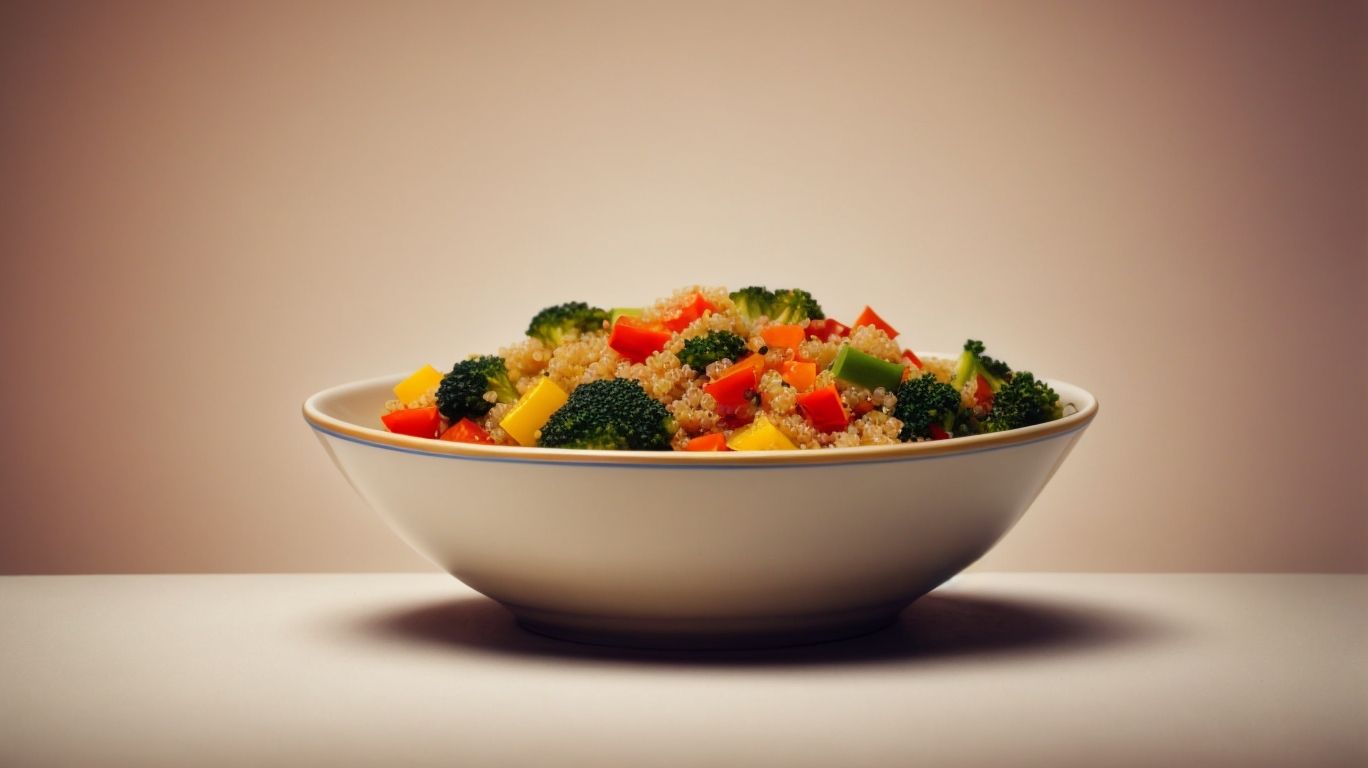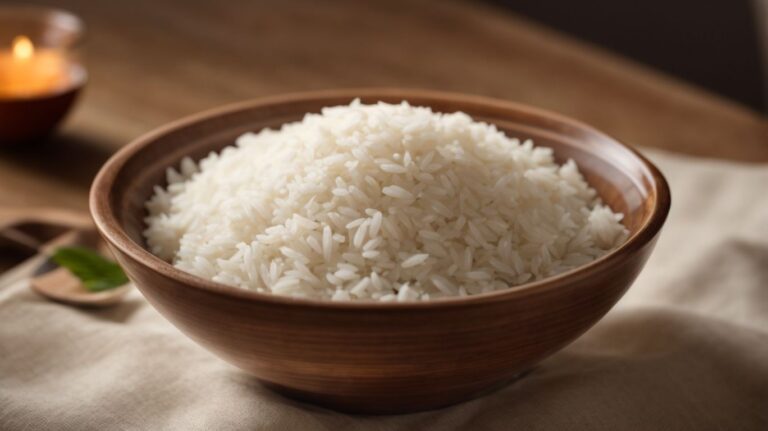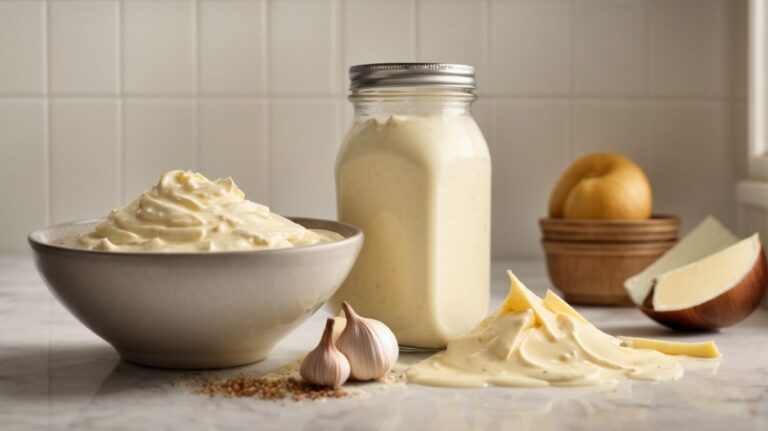How to Cook Quinoa With Vegetables?
Are you looking to add more nutritious and delicious meals to your repertoire?
Quinoa, a versatile and protein-packed grain, is a great option.
We will explore what quinoa is, what vegetables pair well with it, how to cook quinoa, prepare the vegetables, and combine them for a satisfying meal.
Whether you’re a seasoned chef or a beginner in the kitchen, these tips and recipes will help you create a flavorful and healthy dish that will surely impress your taste buds.
Let’s get cooking!
Key Takeaways:
What is Quinoa?
Quinoa is a versatile and nutritious grain-like seed that serves as a staple in many recipes, offering a blend of protein, fiber, and essential nutrients.
Originating from the Andean region of South America, quinoa has been cultivated for thousands of years by indigenous peoples who revered it for its exceptional nutritional value.
Its tiny seeds come in various colors such as red, white, or black, each with a slightly different flavor profile, making it a versatile ingredient in both savory and sweet dishes.
Quinoa is a gluten-free alternative to grains, making it suitable for those with dietary restrictions.
What Vegetables go well with Quinoa?
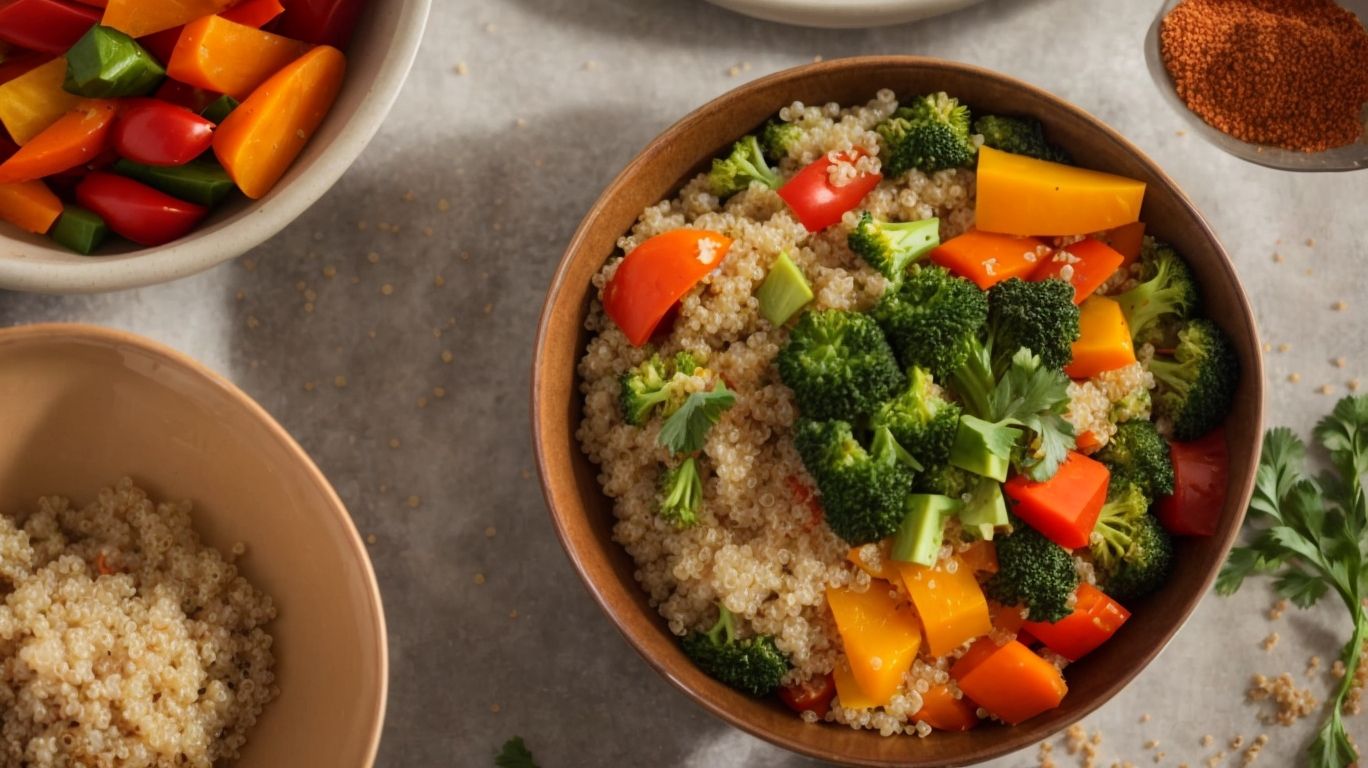
Credits: Poormet.Com – Scott Nguyen
When pairing vegetables with quinoa, consider options that enhance the flavor profile, nutritional content, and overall appeal of the dish.
Quinoa’s nutty taste and versatile nature make it an excellent canvas for a variety of vegetables.
- Spinach is a popular choice, rich in iron and antioxidants, providing a vibrant color and tender texture.
- Broccoli adds a satisfying crunch and is packed with vitamins C and K, boosting both taste and nutrition.
- Bell peppers introduce a sweet crunch and a burst of color, full of vitamin C for added immunity support.
These vegetables complement quinoa’s earthy tones and add a delightful contrast in textures, creating a balanced and satisfying meal.
Broccoli
Broccoli is a nutrient-packed vegetable that pairs wonderfully with quinoa, adding a vibrant color, crunchy texture, and a boost of essential vitamins and minerals to your dish.
Incorporating broccoli into quinoa recipes not only enhances the nutritional value of your meal but also provides a delightful flavor profile that complements the nuttiness of quinoa perfectly. Broccoli is rich in antioxidants, fiber, and vitamin C, making it a fantastic addition to your diet for boosting immunity and overall health.
When cooked with quinoa, broccoli retains its firm texture and slightly sweet taste, creating a satisfying crunch in every bite. Whether roasted, steamed, or sautéed, broccoli adds a refreshing and earthy element to your dishes, making them visually appealing and appetizing.
Carrots
Carrots provide a sweet and earthy flavor profile that complements the nuttiness of quinoa, offering a rich source of fiber, antioxidants, and vibrant color to your meal.
When you incorporate carrots into quinoa dishes, not only do you enhance the taste and texture, but you also boost their health benefits. Carrots are known for being packed with β-carotene, which is essential for eye health and overall immunity. The colorful combination of orange carrots and white quinoa creates a visually appealing dish that is not only delicious but also nourishing. This adds an element of freshness and vibrancy to your plate, making it an enticing option for both everyday meals and special occasions.
Bell Peppers
Bell peppers add a delightful crunch and a burst of color to quinoa recipes, infusing the dish with a sweet and tangy flavor profile that complements the grain’s nuttiness.
When paired with quinoa, bell peppers create a harmonious blend of textures and tastes, offering a refreshing contrast to the tender grains. Their vibrant hues, ranging from green and yellow to red and orange, elevate the visual appeal of any dish, making it a feast for the eyes as well as the palate. The crispness of the peppers adds a refreshing crispness against the fluffy quinoa, while their natural sweetness balances out the earthy notes of the grain.
Spinach
Spinach serves as a nutrient-dense addition to quinoa dishes, offering a delicate texture, fresh flavor, and a substantial dose of iron and other essential nutrients.
Due to its impressive nutritional profile, spinach can enhance the overall health benefits of quinoa-based meals. This leafy green powerhouse is not only rich in iron but also packed with vitamins A, C, and K, as well as folate and magnesium, essential for various bodily functions. Its culinary versatility allows it to be incorporated into salads, wraps, stir-fries, and smoothies, adding both color and flavor. Including spinach in your diet can aid in promoting healthy digestion, boosting immunity, and supporting optimal energy levels.
Mushrooms
Mushrooms offer a savory and umami-rich element to quinoa dishes, providing a meaty texture, earthy flavor, and a depth of taste that elevates the overall dish.
They are excellent at absorbing flavors, making them versatile for various cuisines. Whether sautéed with garlic and herbs, roasted with balsamic vinegar for depth, or incorporated into creamy risottos, mushrooms bring a rich, savory note to the table. In combination with savory vegetables like spinach, bell peppers, or caramelized onions, they create a symphony of flavors and textures in quinoa recipes. Their earthy essence complements herbs like thyme and rosemary, enhancing the overall taste profile of the dish.
How to Cook Quinoa?
Cooking quinoa to perfection involves a few simple steps that ensure a fluffy texture, nutty flavor, and a protein-packed base for your culinary creations.
-
First, start by rinsing the quinoa under cold water to remove any bitter saponins that may affect the taste. Then, for an added depth of flavor, toast the quinoa in a dry skillet until it becomes fragrant.
-
Next, use the proper water-to-quinoa ratio, typically 2:1, in a saucepan. Bring the mixture to a boil, then reduce the heat to a simmer and cover the pot, letting it cook for about 15 minutes.
-
Once the quinoa has absorbed all the water, remove it from the heat and let it sit, covered, for a few more minutes. Fluff the quinoa with a fork to separate the grains and enhance its fluffy texture.
Rinse the Quinoa
Rinsing quinoa before cooking is essential to remove its natural coating, known as saponin, which can impart a bitter taste to the dish if not washed off properly.
When you rinse quinoa, you are essentially washing away this bitter-tasting compound to ensure a clean, neutral flavor profile in your recipes. The process involves placing the quinoa in a fine-mesh strainer under cold running water, gently rubbing the grains together to remove the saponin residue.
By thoroughly rinsing the quinoa, you not only enhance its taste but also improve its texture and ensure it cooks up light and fluffy. This simple step is crucial in elevating the overall quality of your quinoa dishes.
Toast the Quinoa
Toasting quinoa before cooking enhances its nutty flavor and adds a subtle crunch to the grains, elevating the overall taste and texture of the dish.
When toasting quinoa, start by heating a dry skillet over medium heat. Once the skillet is hot, add the quinoa grains and stir them continuously for about 5-7 minutes until they start to turn golden brown. This process helps to remove the natural coating of saponins, which can give quinoa a bitter taste if not rinsed properly. Toasting is known to increase the aroma and intensify the nuttiness of quinoa, creating a more flavorful base for various dishes.
Add Water and Bring to a Boil
Adding water to quinoa and bringing it to a boil is the initial step in the cooking process, allowing the grains to absorb moisture and soften gradually.
When cooking quinoa, the typical water-to-quinoa ratio is around 2:1. This means for every cup of quinoa, you should add two cups of water. Once the water is added, cover the pot and bring it to a boil. Reduce the heat to a simmer and let it cook for about 15 minutes or until the water is absorbed and the quinoa grains have a fluffy texture.
Proper hydration is essential during cooking as it ensures that the quinoa cooks evenly and prevents it from becoming mushy or crunchy. It’s important to keep an eye on the cooking process, stirring occasionally to prevent clumping and checking the water levels to avoid burning the grains.
Reduce Heat and Simmer
After bringing quinoa to a boil, reducing the heat and simmering the grains gently allows them to cook evenly, absorb flavors, and achieve a fluffy consistency.
Simmering is a crucial phase in the quinoa cooking process, where maintaining the right temperature is key. By adjusting the heat to a low setting, typically a gentle simmer around medium-low, you ensure that the grains cook through without getting burnt or becoming mushy.
Cooking duration during simmering varies but generally falls between 15 to 20 minutes. This time frame allows the quinoa to soften gradually, releasing its nutty aroma and taste. The exact timing may also depend on the specific type of quinoa being prepared.
As the quinoa simmers, it gradually absorbs any added seasonings or broth, enhancing its overall flavor profile and making each bite more enjoyable. The end goal of this slow cooking method is to achieve a light and fluffy texture that is perfect for a variety of dishes.
Fluff with a Fork
Fluffing quinoa with a fork post-cooking helps separate the grains, prevent clumping, and achieve a light and airy texture that enhances the overall dish.
By gently running a fork through the cooked quinoa, you can ensure each grain stands distinct, rather than sticking together in a mushy mass. This simple yet crucial step not only enhances the aesthetic appeal of the dish but also plays a significant role in maintaining the desired texture. The process of fluffing involves delicately loosening the cooked quinoa grains, allowing them to breathe and absorb any additional flavors or seasonings added post-cooking.
How to Prepare the Vegetables?

Credits: Poormet.Com – Kevin Torres
Preparing vegetables for pairing with quinoa involves washing, chopping, and sautéing them to retain their nutrients, flavors, and vibrant colors in the final dish.
When washing vegetables, it’s essential to use running water and a vegetable brush to remove any dirt or residue while ensuring not to rinse away essential nutrients.
For chopping, consider small uniform pieces to ensure even cooking, enhancing the presentation of the dish.
Sautéing vegetables involves heating oil in a pan, cooking them over medium heat until tender yet still crisp, preserving their natural textures.
Experiment with different seasonings like garlic, herbs, or soy sauce to elevate the flavors.
Incorporating a variety of fiber-rich ingredients such as leafy greens, bell peppers, and broccoli can enhance the nutritional value of the dish.
Wash and Chop the Vegetables
Before cooking, ensure to wash and chop the vegetables uniformly to facilitate even cooking, enhance visual appeal, and preserve their nutritional content.
Properly washing the vegetables removes dirt, pesticides, and any bacteria, reducing the risk of contamination in your dish. Chopping them uniformly ensures consistent cooking, avoiding some pieces being undercooked while others are overdone.
Cutting vegetables in similar sizes enhances the dish’s presentation, creating a visually pleasing and professional look. This attention to detail elevates the overall aesthetics and makes the dish more appetizing.
Efficiency in washing and chopping vegetables also saves time during the cooking process, streamlining your preparation and making the entire cooking experience smoother and more enjoyable.
Sautee the Vegetables
Sautéing vegetables in a pan with herbs and spices elevates their flavors, textures, and aromas, enriching the overall taste profile of the quinoa dish.
The magic of sautéing lies in the intimate dance of heat and ingredients, coaxing out the natural sugars and releasing complex umami flavors.
As the vegetables sizzle in the pan, they undergo caramelization, bringing a delightful sweetness that balances the savory notes. The careful tossing and turning ensure that each piece is coated evenly with the aromatic blend of herbs and spices, allowing for a symphony of tastes with every bite. This precise cooking technique not only enhances the vegetables but also creates a harmonious blend of flavors, making the quinoa dish a truly gourmet experience.
Season with Herbs and Spices
Enhance the vegetable flavors by seasoning them with a medley of herbs and spices that complement the natural sweetness and textures, creating a harmonious blend of tastes in the final dish.
Regarding seasoning vegetables, the possibilities are endless. Delicate herbs like parsley and dill can add freshness, while robust spices such as cumin and paprika bring depth and warmth to the dish. By experimenting with herb and spice combinations, you can elevate the flavors of your vegetables and turn a simple dish into a culinary masterpiece.
Consider incorporating aromatic profiles like the earthy notes of thyme or the citrusy undertones of coriander to enhance the overall taste experience. The careful balance of these flavors can add complexity and intrigue to your dishes, making each bite a delightful adventure for your taste buds.
How to Combine Quinoa and Vegetables?
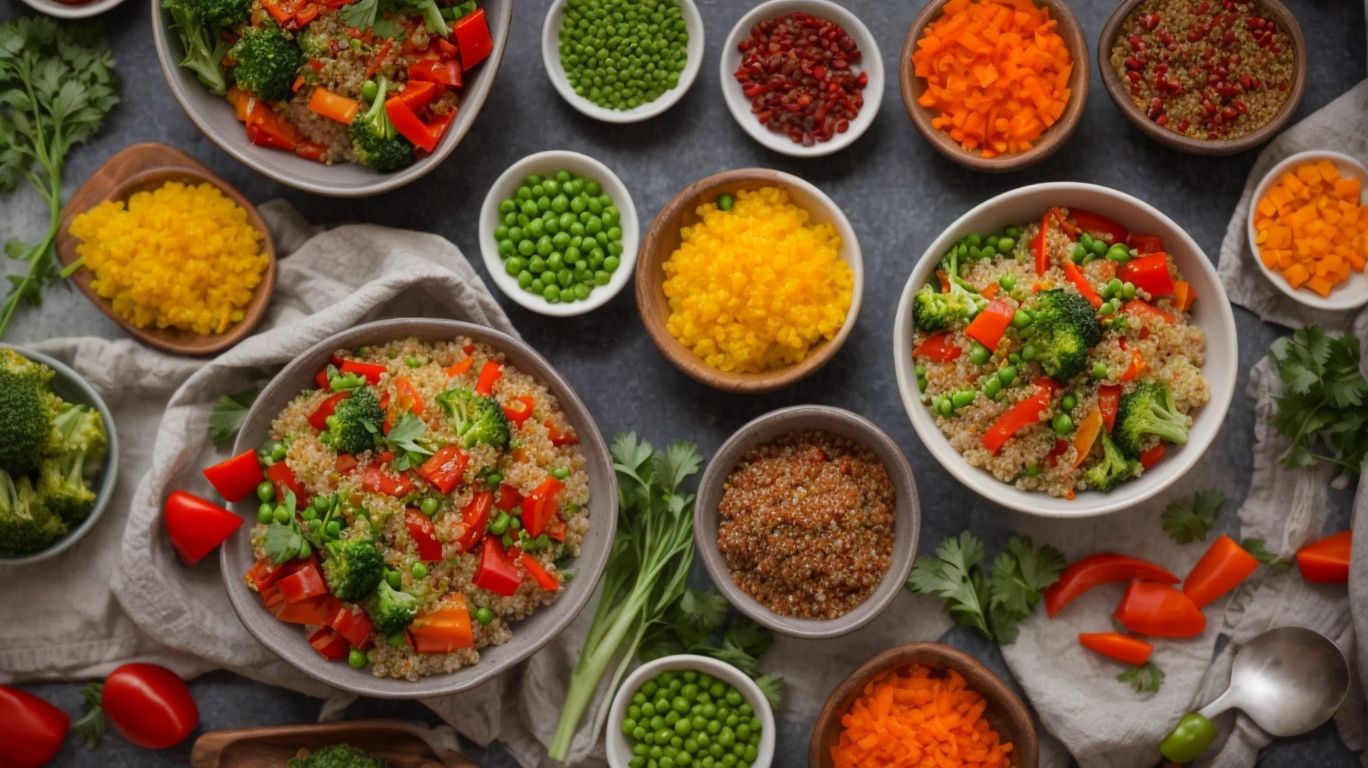
Credits: Poormet.Com – Lawrence Lewis
Combining quinoa and sautéed vegetables involves mixing the cooked grain with the seasoned vegetables to create a balanced and flavorful stir-fry dish that is both nutritious and satisfying.
When incorporating quinoa into a stir-fry, it’s essential to ensure that the quinoa is thoroughly cooked and fluffed before incorporation to maintain its light, fluffy texture. The vegetables should be sautéed to a tender-crisp consistency, adding a delightful crunch to the dish.
- To enhance the flavors, consider adding a splash of soy sauce or teriyaki sauce for a touch of umami, or a sprinkle of sesame seeds for a nutty finish. These additions complement the subtle nuttiness of quinoa, creating a harmonious fusion of flavors.
Mix the Quinoa and Vegetables
Gently mix the cooked quinoa with the sautéed vegetables, ensuring thorough blending of flavors, textures, and colors to create a harmonious and balanced stir-fry base.
This delicate process not only enhances the overall taste profile but also ensures that each mouthful offers a delightful combination of nutty quinoa, crunchy vegetables, and aromatic spices. The key to achieving culinary perfection lies in meticulously distributing the ingredients, allowing every bite to showcase a diverse range of flavors. As the quinoa absorbs the savory juices from the vegetables, a wonderful medley of tastes unfolds, providing a satisfying and wholesome dining experience.
Add a Dressing or Sauce
Enhance the quinoa and vegetable stir-fry by adding a flavorful dressing or sauce that complements the ingredients, adding an extra layer of taste and aroma to the dish.
Adding a well-crafted sauce to your quinoa dish can truly elevate the dining experience. The right combination of flavors can bring out the natural nuttiness of quinoa while enhancing the freshness of the vegetables. A sauce can also play a crucial role in the texture of the dish, providing a smooth finish or a delightful crunch, depending on the chosen recipe.
Experimenting with different sauce recipes opens up a world of possibilities in terms of taste profiles and seasoning options. From tangy vinaigrettes to creamy tahini-based dressings, each sauce brings its unique character to the dish, allowing for endless culinary creativity in the kitchen.
Tips for Cooking Quinoa with Vegetables
To elevate your quinoa and vegetable preparations, consider experimenting with different herbs, spices, and sauce combinations to discover unique flavor profiles that suit your palate.
One effective way to enhance the taste of your dishes is to play around with contrasting flavors – try adding a hint of sweetness like honey or maple syrup to balance out the earthiness of quinoa and veggies.
Incorporating a variety of textures can elevate your dish. Think about adding crunchy nuts or seeds as a topping for a delightful contrast, or even some creamy tahini or avocado for a smooth, velvety finish.
Don’t be afraid to mix and match ingredients like roasted bell peppers with feta cheese, or caramelized onions with balsamic vinegar, to create exciting flavor fusions that will impress your taste buds.
Conclusion
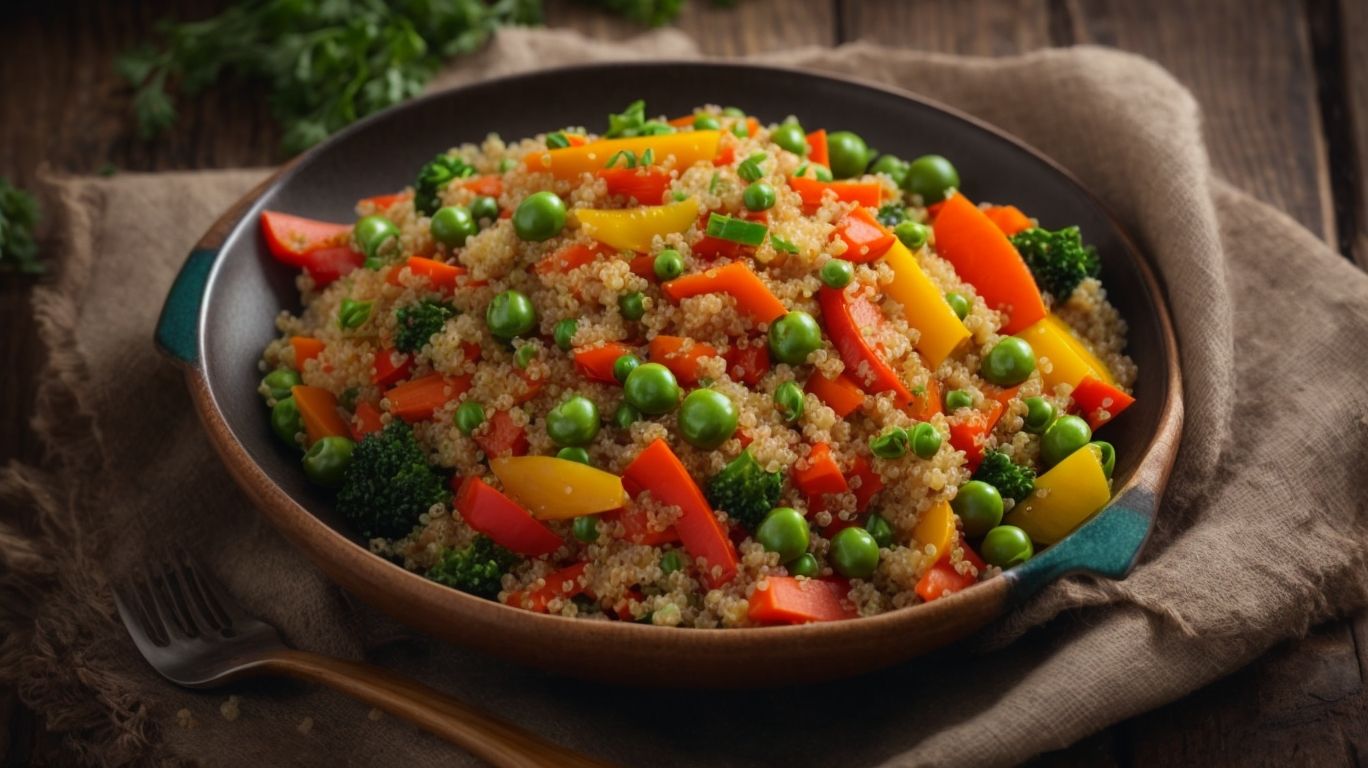
Credits: Poormet.Com – Jack Ramirez
Incorporating quinoa with a variety of vegetables offers a nutritious, flavorful, and versatile meal option that caters to both taste and health preferences.
Quinoa, known for its high protein content and essential amino acids, pairs well with an array of vegetables, enhancing not only the taste but also the nutritional profile of dishes. This superfood’s adaptability allows for endless combinations with vegetables, such as bell peppers, spinach, tomatoes, and avocado, adding textures and flavors that complement each other. The fiber-rich nature of quinoa alongside the vitamins and minerals in vegetables creates a satisfying and wholesome meal that can suit various dietary needs and preferences.
Frequently Asked Questions
How do I cook quinoa with vegetables?
To cook quinoa with vegetables, start by rinsing 1 cup of quinoa under cold water. In a pot, combine the quinoa with 2 cups of water and bring to a boil. Reduce the heat and let it simmer for 15-20 minutes. In a separate pan, sauté your favorite vegetables with olive oil and spices. Once the quinoa is cooked, mix in the sautéed vegetables and serve.
Can I use any type of vegetables for this dish?
Yes, you can use any type of vegetables you prefer. Some popular options include bell peppers, zucchini, mushrooms, carrots, and broccoli. You can also mix and match different vegetables to create your own unique flavor combination.
How can I add more flavor to my quinoa and vegetable dish?
You can add more flavor by using different spices and seasonings such as cumin, garlic powder, paprika, or dried herbs like thyme or oregano. You can also add a splash of lemon juice or balsamic vinegar for a tangy flavor.
Can I make this dish vegan or vegetarian-friendly?
Absolutely! This dish is naturally vegan and vegetarian-friendly. You can also add in some protein sources like tofu or chickpeas for extra nutrients and texture.
How do I store any leftovers?
If you have any leftovers, let the dish cool down before transferring it to an airtight container. Store it in the refrigerator for up to 3 days. You can reheat it in the microwave or on the stove for a quick and easy meal.
Is quinoa and vegetable dish a healthy option?
Yes, it is a healthy and nutritious option. Quinoa is a whole grain that is high in protein, fiber, and essential nutrients. Vegetables are also packed with vitamins and minerals, making this dish a well-balanced and nutritious meal.

